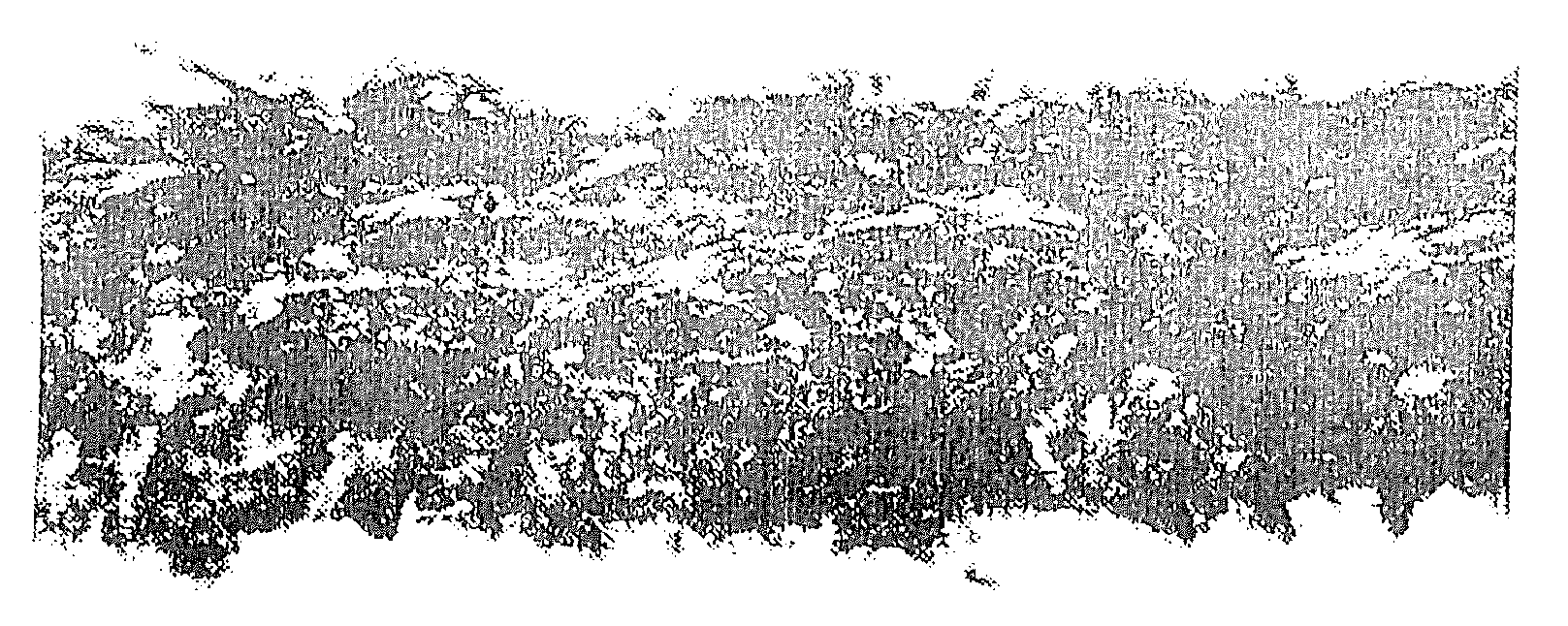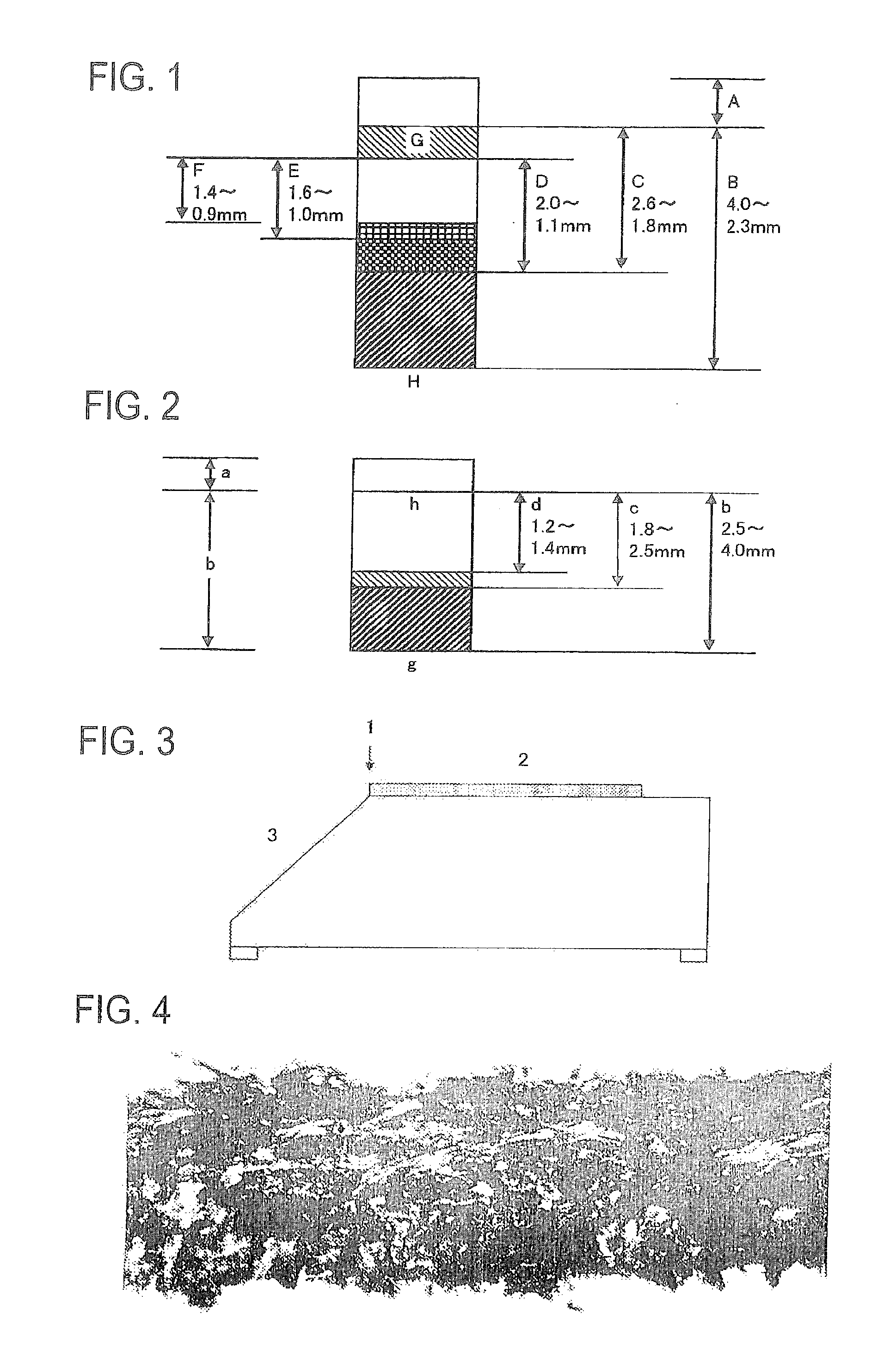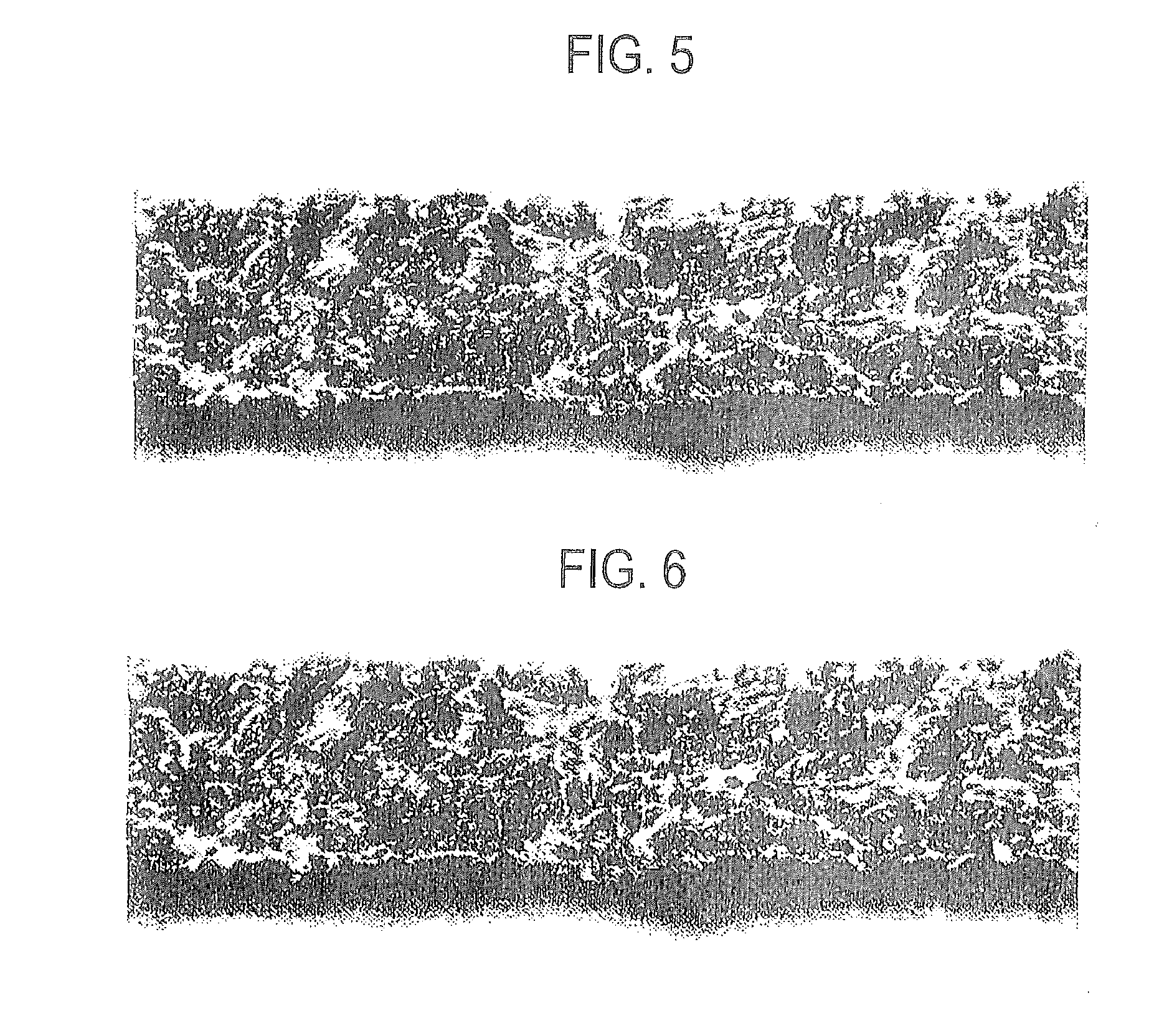Car-seat split crust leather and method for manufacturing the same, and car-seat leather using the car-seat split crust leather and method for manufacturing the same
a split leather and car seat technology, applied in the direction of leather surface finishing, leather dyeing process, transportation and packaging, etc., can solve the problems of split leather, uneven uneven thickness of split leather, etc., and achieve the effect of not enough gloss and color tone, heavy weight per unit area
- Summary
- Abstract
- Description
- Claims
- Application Information
AI Technical Summary
Benefits of technology
Problems solved by technology
Method used
Image
Examples
example 1
[0204]Pretreatment
[0205]A cowhide in a state of being left stripped from an animal was salt-cured.
[0206]This was taken out, and was treated by preservative.
[0207]A subcutaneous tissue, a lump of flesh, fat and the like were attached onto an inner surface of such a raw hide. In order to remove these, fleshing was performed by using a fleshing machine.
[0208]The raw hide, which was added with water, and was allowed to absorb water and was softened, was immersed into lime milk, and a surface skin tissue thereof was dissolved and removed.
[0209]The hide was subjected to neutralization by deliming, and was added with water, calcium hydroxide was eluted therefrom by shrinkage, and the hide was subjected to bating treatment of performing enzyme treatment, and thereafter was subjected to pickling treatment by acid.
example 2
[0210]Tanning Step
[0211]Tanning was performed in a state where, with respect to 160 kg of a leather weight, 38.8 kg of a trivalent chromium complex Cr2(SO4) as a tanning agent and 0.6 kg of bicarbonate was added to 156 kg of water. A treatment temperature was 38° C., pH was 3.5, and a treatment time was 12 hours.
example 3
[0212]By using the band knife machine, the leather thus obtained was sliced into leather including a grain surface and split leather with a thickness of 2.6 mm, and the split leather was taken out. The split leather was arranged so that a flesh side thereof could be located on an upper side and that a grain side thereof could be located on a lower side. At first, a surface on the grain side was sliced by the band knife to obtain split leather with a thickness of 2.5±0.3 mm. Next, a flesh side of the split leather is shaved by the shaving machine to thereby set the thickness of the split leather to 1.5±0.3 mm, and further, the grain side thereof was shaved by the shaving machine, whereby split leather with a thickness of 1.3±0.3 mm was obtained (±0.3 mm is a range of a tolerance of the band knife machine and the shaving machine.).
PUM
| Property | Measurement | Unit |
|---|---|---|
| thickness | aaaaa | aaaaa |
| thickness | aaaaa | aaaaa |
| thickness | aaaaa | aaaaa |
Abstract
Description
Claims
Application Information
 Login to View More
Login to View More - R&D
- Intellectual Property
- Life Sciences
- Materials
- Tech Scout
- Unparalleled Data Quality
- Higher Quality Content
- 60% Fewer Hallucinations
Browse by: Latest US Patents, China's latest patents, Technical Efficacy Thesaurus, Application Domain, Technology Topic, Popular Technical Reports.
© 2025 PatSnap. All rights reserved.Legal|Privacy policy|Modern Slavery Act Transparency Statement|Sitemap|About US| Contact US: help@patsnap.com



